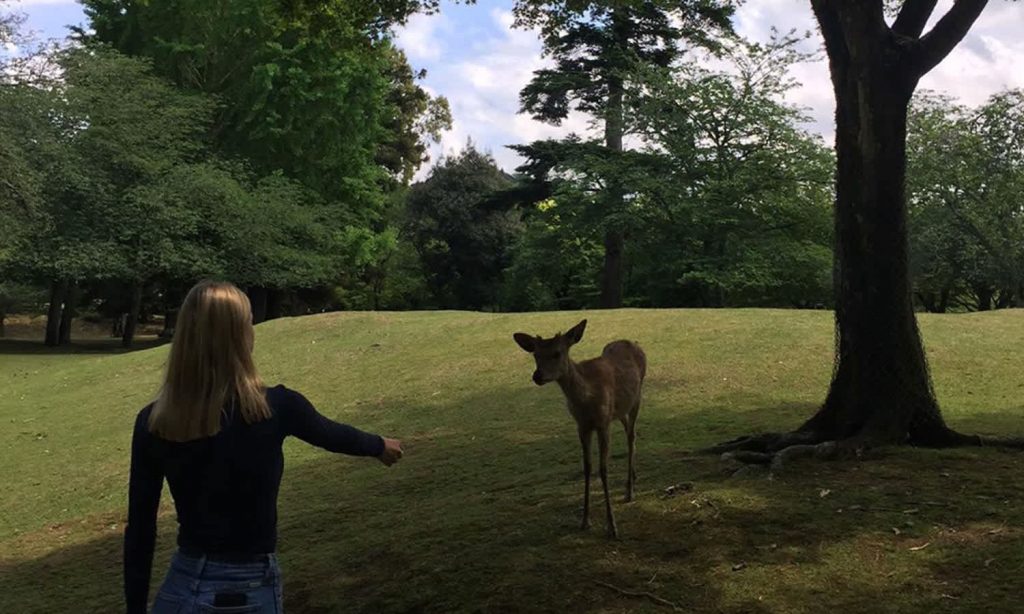In 2022, why not make your new year’s resolution about bettering the planet, as well as yourself? For the last umpteen years, you’ve likely had the same resolutions to drink more water, journal every evening, or meditate every day.
Good on you if you’ve managed to solidify these habits of self-care (lord knows I’m yet to tick those off), but even if you haven’t yet, this coming year, we suggest adding some more meaningful changes into your day-to-day routines — changes that contribute to a more eco-friendly existence.
These five easy swaps to the way you go about your life are so small and simple to implement that you’ll hardly notice a change yourself, yet in making each one of these small shifts, you’ll reduce your environmental footprint exponentially.
Get acquainted with these small actions below, and remember, you don’t have to wait until 2021 to get cracking on these tips. In fact, you can, and should, start right now.
Cut Down on Single-Use Plastic
You likely already know the harm single-use plastic has on the environment, so why not try cutting down on it in your kitchen, laundry and bathroom this year?
On a mission to rid the world of single-use plastic and to clean up the junk in our oceans, Zero Co delivers products to your door in bottles made from plastic pulled from ocean and beach clean-ups. You can use them again and again, pouring in the cleaning product from refillable pouches you’ll be sent. Get the Zero Co Starter Box for $159 (on sale).
Give Up Chewing on Rubbish
I’m just going to say it. Gum sucks! It’s gross, it gets stuck to the pavement and to your shoes, and the no one likes the sound of you chewing it. Sorry. Furthermore, gum is horrendous for the environment.
As Niccii Kugler, founder of Nash + Banks — a curated lifestyle platform and an online store that brings together authentic, remarkable and sustainable brands — explains: “Most mainstream chewing gum contains plastic and synthetic rubber, which means every piece of gum ever chewed still exists!”
Kugler suggests either swapping to mints, which break down as you consume them, or alternatively, looking into a greener option like Swell, a local Sydney brand that makes natural, plant-based, plastic-free and biodegradable gum.
Choose Sustainably Packaged Beauty Products
“The amount of single-use plastic packaging the cosmetic industry produces each year is staggering, and each bottle or jar can take up to 1,000 years to break down,” says Kugler.
Thankfully, there’s been a recent uptick in sustainable packaging options that allow us to make more eco-friendly choices. “Go for solid, packaging-free products for essentials like shampoo and facewash, containers made from plant-based, biodegradable or recycled materials, or brands with circular packaging initiatives whereby you return empty jars for reuse.”
Check out our guide to beauty brands that offer in-store recycling, or peruse our list of plastic-free beauty brands now.
Donate Your Unwanted Clothing to Give Them a Second Life
Australians send between 500,000 and 800,000 tons of unwanted clothing to landfill each year. While building a capsule wardrobe of quality pieces, with items that transcend trends and will stand the test of time, is a sure-fire way to avoid fast fashion and reduce the sheer amount of clothing sent to landfill, you may first have to deal with clearing out your closet.
“While natural fibres such as cotton will degrade into the earth relatively quickly, synthetic fibres take hundreds of years and may never break down completely,” says Kugler.
“Instead of contributing to the problem by throwing your old clothes in the bin, separate those that are wearable to donate to a charity, thrift store or community organisation, and give anything that is worn out to a textile recycling initiative such as Manrags.”
Choose Fashion Labels That Upcycle Waste Instead of Using Virgin Materials
Your journey to a sustainable wardrobe continues even after the closet donations. If and when you end up purchasing new clothes, be sure to do your research and buy from brands with responsible initiatives in place, that specifically, work with upcycled textiles rather than brand new fabrics.
“Producing clothing using virgin materials takes an extraordinary amount of resources, and as mentioned, much of it ends up in landfill. By choosing clothing from innovative brands that utilise recycled textiles such as The Common Good Company and ANTTI we can reduce the amount of water, land use and pollution involved as well as save textile waste from landfill,” Kugler says.
Choose A Sustainable Keep Cup for Your Coffee
“Takeaway coffee cups contain a waterproof plastic lining which means they’re not recyclable so a reusable cup is a must,” says Kugler.
While a reusable coffee cup is undoubtedly the way forward from single-use coffee cups, some are indeed better than others. “A Huskee Cup is quite possibly the most stylish sustainable keep cup option out there. It is made using the organic coffee husk that is a waste product of the coffee industry as a raw material.
“Huskee also has two circular models in place: HuskeeSwap and HuskeeLoop, to ensure that at the end of each HuskeeCup’s lifespan their old cups will be repurposed and remain out of landfill. If your own is reaching the end of its run (after three years or so), you at the end of your HuskeeCup’s lifespan (about three years) you can take it into a participating café and swap it for a fresh one.”
Read more stories from TheLatch— and follow us on Facebook.

